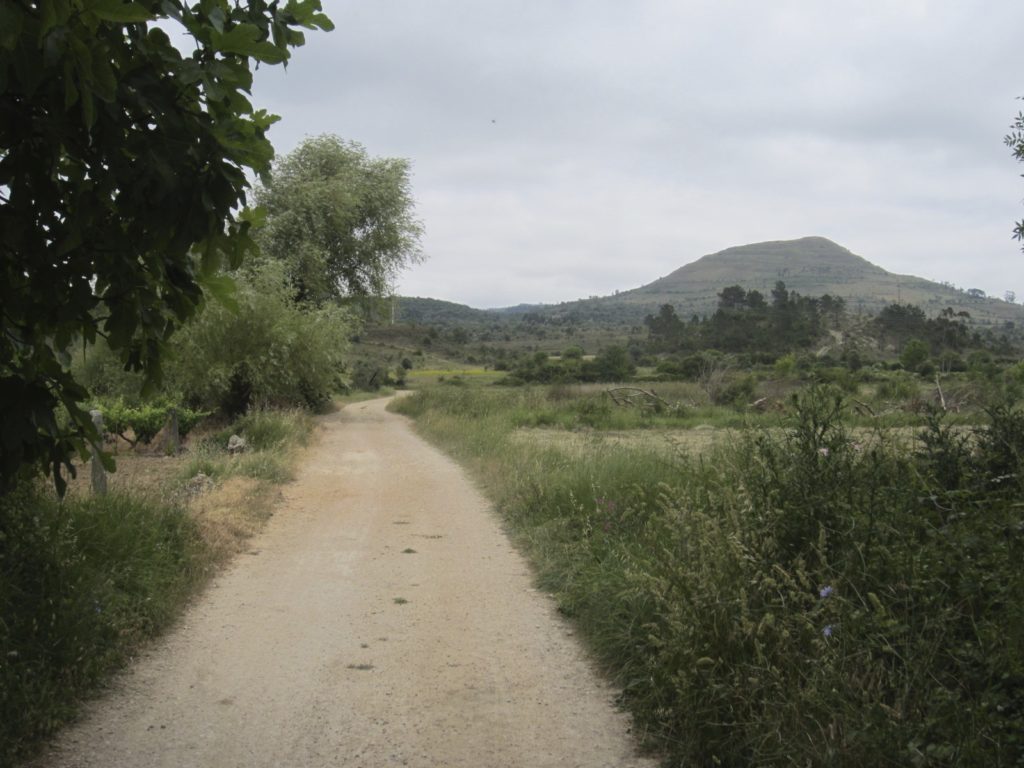
For part 1 of the Caminho Portuguese, click here.
The first week on the Caminho Portuguese had proved to the most difficult and demanding of all my caminos, but I as long as I could get out of bed in the morning and put my boots on without assistance I was prepared to carry on. I had reached the town of Alviazare, about half way between Lisbon and Porto, after six days, and I expected to reach Porto in another six. Carlos, the owner or the albergue in Alviazare, had provided great hospitality to all his guests, and he kindly drove two of my fellow pilgrims, Diego and Miguel, to the nearby city of Coimbra, as they were suffering from blisters. So I had to face the next day by myself. Once again, the stage was another 30 KM whopper, the seventh straight day of such a distance. Thankfully the searing temperatures which had followed me since I left Lisbon had given way to cooler overcast days, but the landscape remained eerily quiet and empty of people. This was 21st century Europe, and yet it could have been medieval times. I did see one fellow traveller on that stretch, but he was heading in the opposite direction. He was animatedly engaged in conversation on his phone as he approached me, but he broke off for a moment to wish me a “buen camino” as he passed.
I stayed in a quaint village called Rabacal that night, which was noted for its well preserved Roman Villa and mosaic floors. Judging by the liveliness of the town, it seemed as if few people had lived there since Roman times. I spotted a series of death notices posted on walls and poles, informing the townspeople about the recent passings of their fellow community members. This was a custom across a lot of Portugal for announcing a person’s death. Rabacal was a pretty village that consisted of one main street of white houses with red tiled roofs, but the only shop didn’t even sell bread. Much life had migrated from Portuguese villages to the bigger towns and cities, where opportunities were more abundant. What the emigrants had left behind were attractive little villages that hinted at memories of more prosperous times, but whose demise was being signalled with every death notice that was posted on its walls. Such was the way of rural life in the West. The Camino Francés had rejuvenated similar regions in the north of Spain, but given the paucity of fellow pilgrims I had encountered in my first week in this country it would be a long time before Portugal would enjoy the same bounty.
THE MONASTIC LIFE
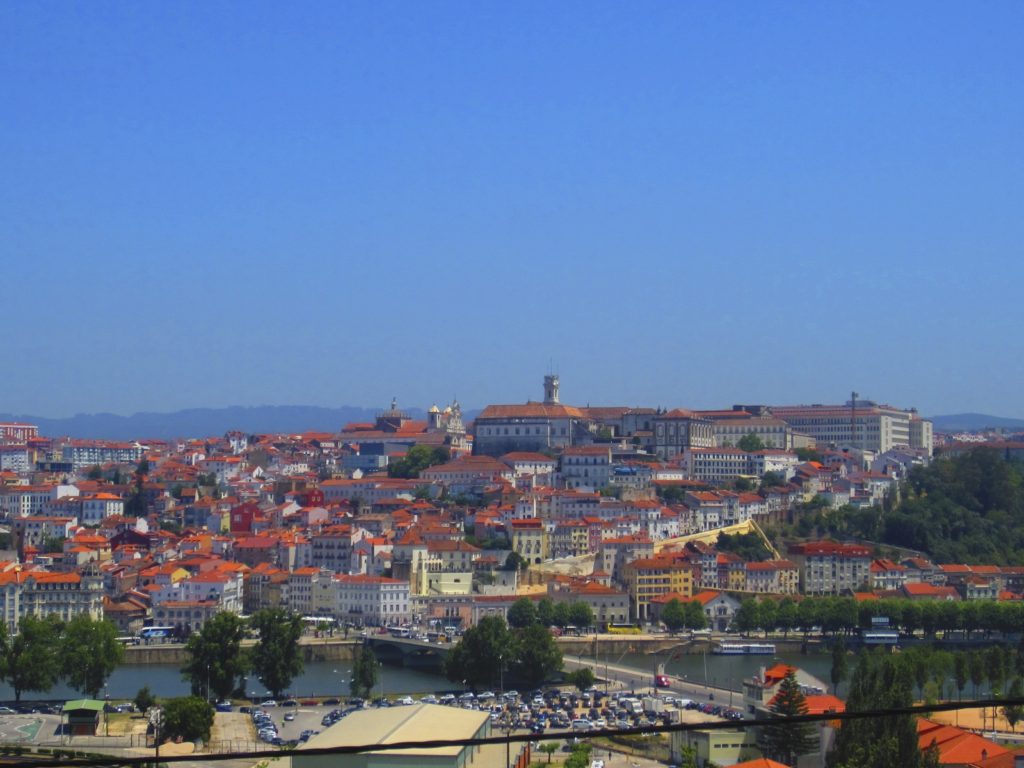
Isolated as Rabacal seemed, within a few hours I was in the historic metropolis of Coimbra, Portugal’s capital for a hundred years from the mid 12th to mid 13th century. By car I could probably have reached it in 30 minutes or less, but such is the metamorphosis of time when travelling by foot. This lively university city was a refreshing contrast from isolation I had endured for the previous few days. Although there was just one other pilgrim in the albergue, which was located in an imposing hillside monastery which offered splendid views of the main town on the opposite side of the river, it was nice to be around other humans again. Or even just another human. I’ve often had – and continue to have – fantasies of running away from my life and living as a hermit in an inaccessible, sequestered location, where I have very limited contact with other members of my fellow species, but short bouts of seclusion usually cure me of such desires. My fellow traveller in this albergue was a Swiss man called Raymond. He didn’t speak a word of English, and even if I could speak a few words of his native language, French, communication between us was not very fluent. Nonetheless, we got by. Gestures, body language, and a few shared words and phrases were enough for us to understand each other. The language mavens who think that perfect grammar and syntax is a prerequisite for proper conversation and interpersonal dialogue should spend a few days on the Camino. Or with a dog for that matter.
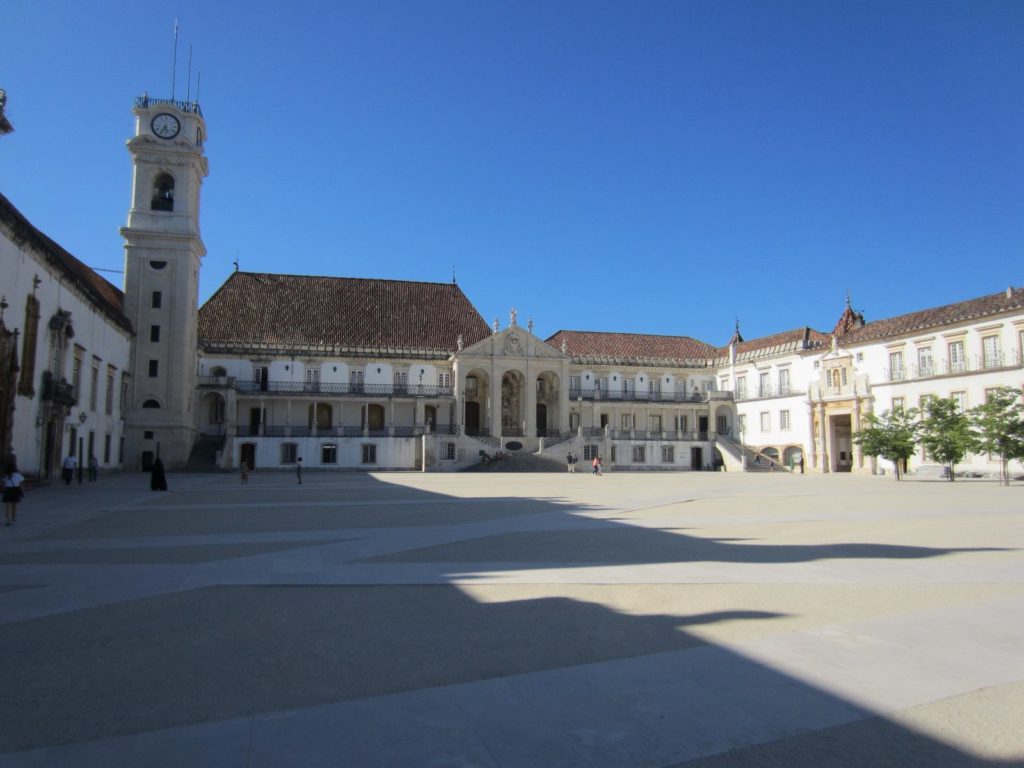
Coimbra offered a wealth of rich architecture, winding lanes and alley ways with busy shops and cafes, inviting medieval churches with colourfully tiled interiors, but, most importantly, it had more cloisters than a monastic theme park. There are few things in life I like more than cloisters. I can’t rationally explain their appeal, I just know that if there are cloisters in a place, that’s where I want to be. I was absolutely in my element. Trying to find a shop that sold basic provisions was still a challenge, but given the abundance of cloisters I was prepared to forgive Coimbra this shortcoming. The university at the top of the town was the city’s crown jewel. Its majestic central square offered a nice place to stroll and contemplate deep thoughts, while soaking up hundreds of years of architectural heritage. Coimbra is Portugal’s hidden secret, and one of the highlights of this Camino.
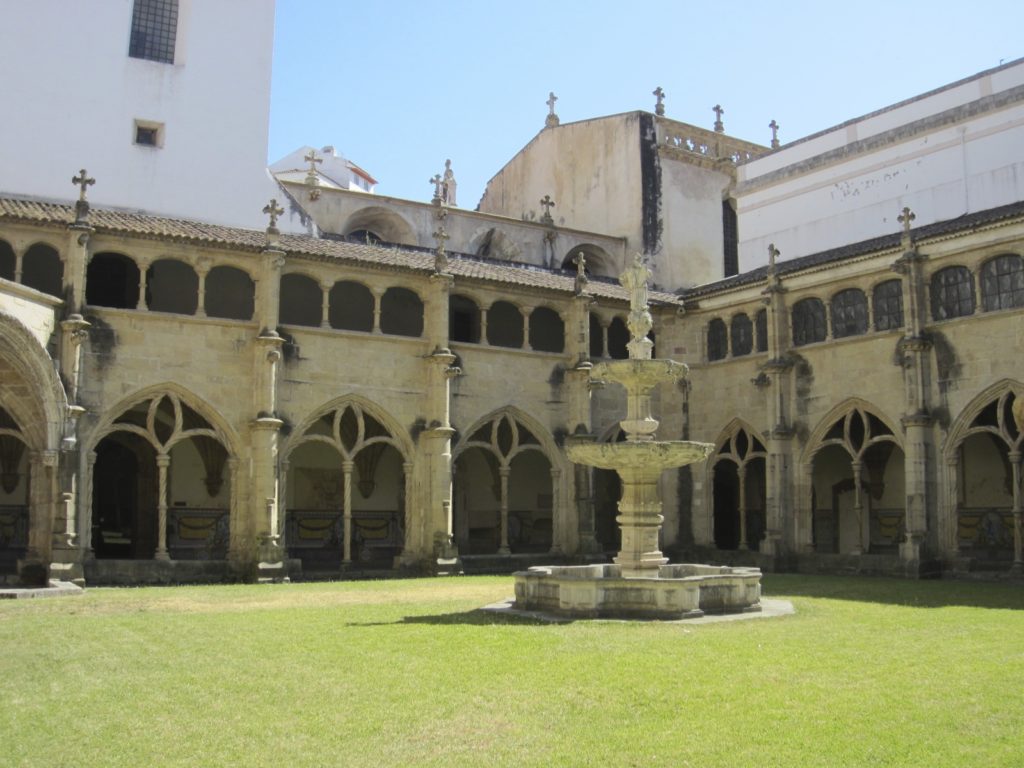
Despite my love of monasteries, I didn’t sleep well in the one I was staying. There’s nothing like a restless night of inadequate slumber to put you in prime form before setting off on a 30 km hike in hot weather. The charms of that day’s walk were lost on me as my body was propelled along on an unhealthy mixture of adrenalin and cortisol until I reached the town of Anadia, a curious place that had an attractive modern square with a walkthrough fountain that for some reason reminded me of the small American towns romanticised in movies about the 1950s. This town was a detour from the main camino, but according to John Brierly’s guidebook it was supposed to have an a nice albergue. His book gave the name of the street on which the albergue was based, but could he have provided a map, or directions from a key location? That would have been asking a bit much. Using what little Portuguese I had I asked some locals if they knew of this albergue’s whereabouts, hoping that they would have enough English to respond. Fortunately, many of these people did speak English, and while the replies were usually intended to be helpful the directions I received led me to wonder if these people had taken lessons in orienteering from John Brierly himself.
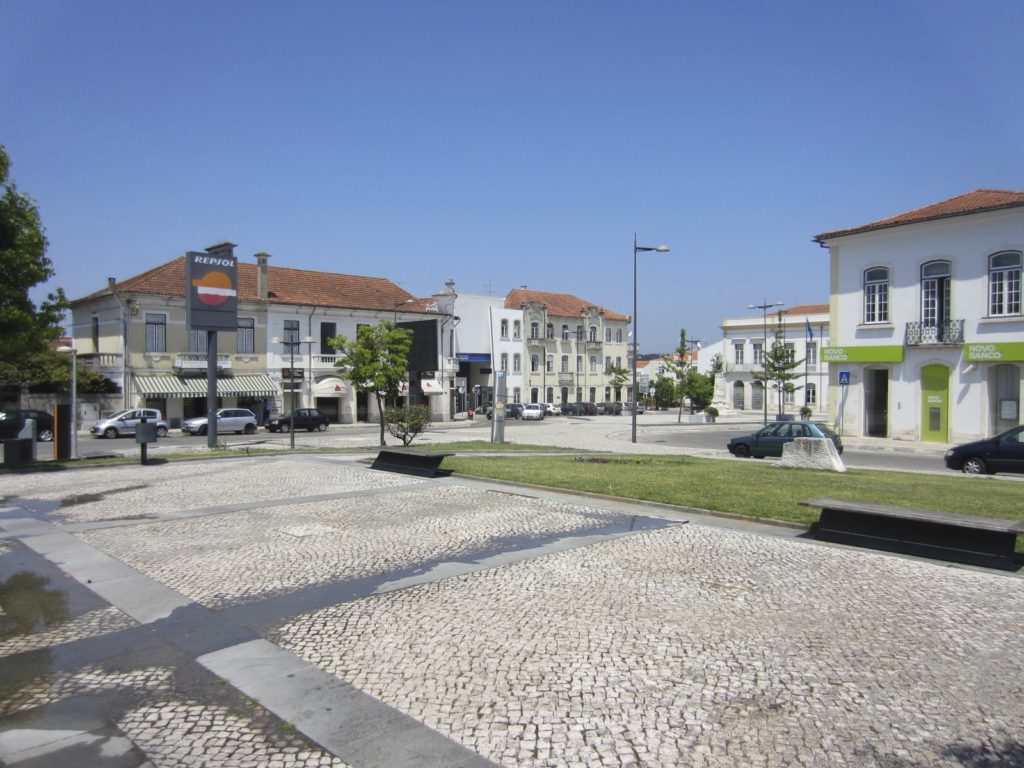
Bit by bit I sensed I was heading in the right direction, but the afternoon was wearing on, the heat from the sun was becoming more intense, hunger and tiredness were starting to wear me down, and delirium was beginning to kick in. After wandering for a seeming eternity I went into a shop where neither of the employees spoke any English, but with a serious of words and gestures the young man who worked there ushered me further along the road, and used the word ‘semaforos’ in his directions. His female colleague just smiled bemusedly, knowing that this wasn’t likely to get me to where I needed to go. But then something twigged inside me. I recalled from years earlier how a Spanish companion of mine used to curse the traffic lights that turned red as I was driving her home each night. The word she used was ‘semaforos’. Eureka! The shop employee was telling me to turn right at the traffic lights. I thanked him and went on my way. I found the albergue a few minutes later. It was in a convent and I was welcomed by a kindly nun who told me I could stay there for free. I enjoyed a better night’s sleep than I had the previous night, and unsurprisingly I had the whole place to myself. I left them 10 Euros as a thank you the next morning.
IN THE LINE OF FIRE
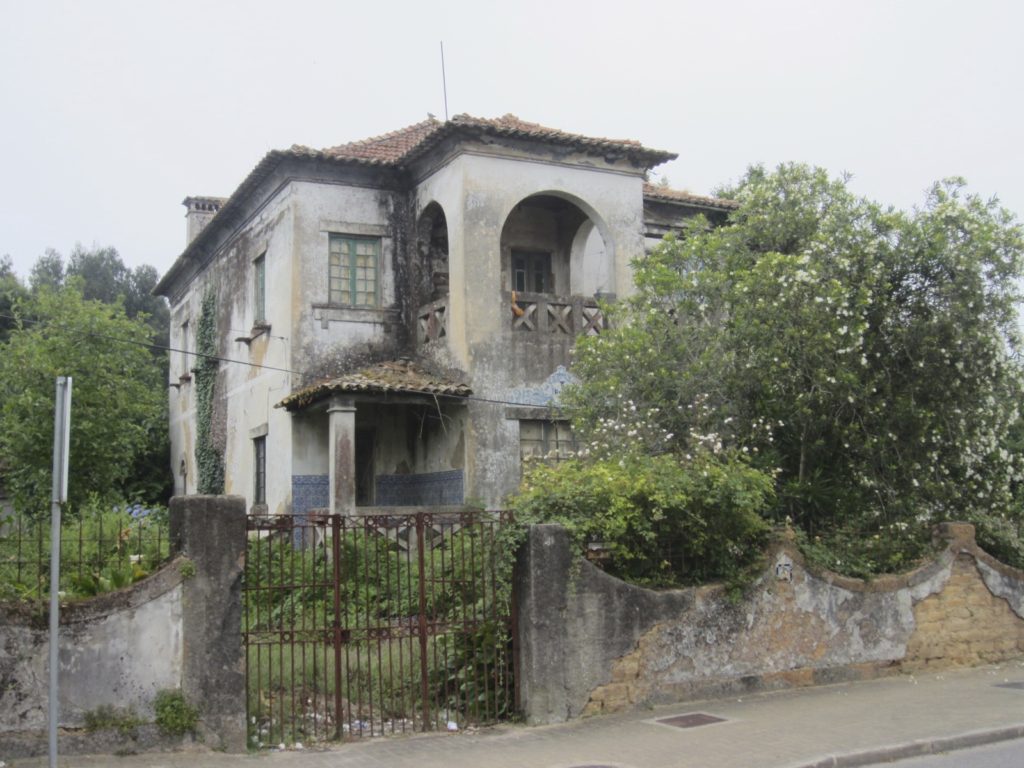
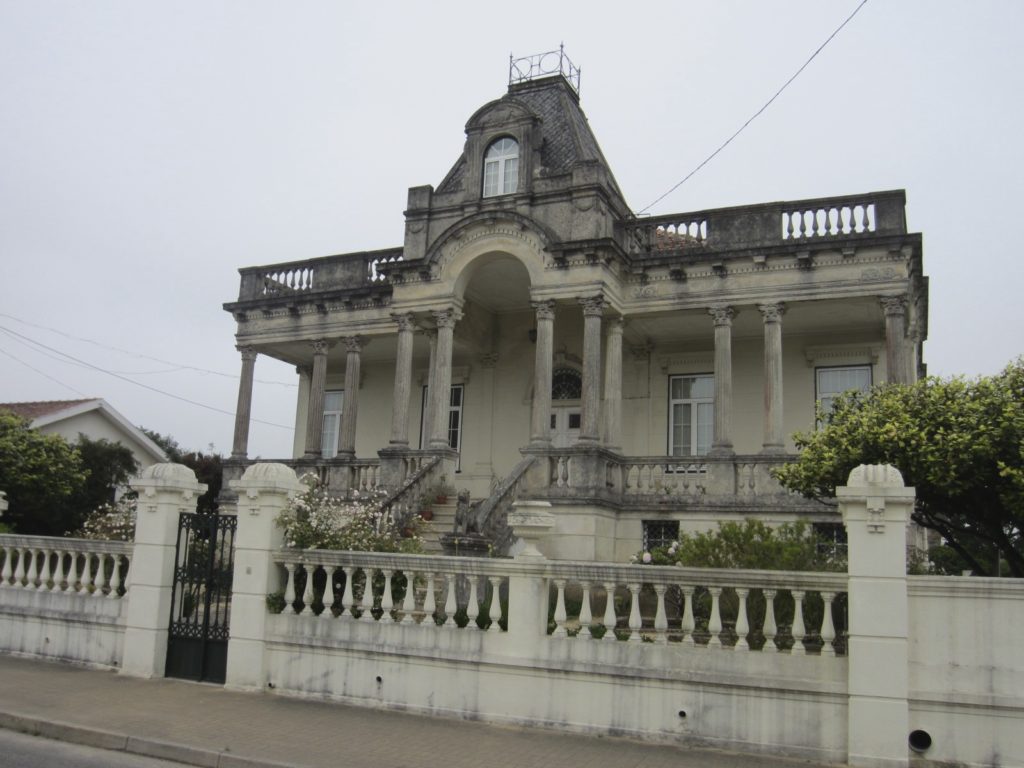
Porto, Portugal’s second city was three days walking from Anadia, approximately 100 kilometres away. Much of the route went along roads, many of them quiet and rural, where I passed many magnificent old mansions whose decaying edifices reminded passersby of faded grandeur and better times. A eucalyptus forest interrupted the road walking, and a night in the pleasant town of Albergaria-a-Velha introduced me to some new travellers with whom I shared a common language. This town was in the throes of its unique bread festival, although trying to gain entry to the festivities was beyond the remit of mere pilgrims like me, and security seemed to be too plentiful to try and dodge. My new pilgrim friends had tried, yet they were foiled. Considering that both of them were police I thought it prudent for a civilian like me to forego gatecrashing the celebration of one of our most basic food sources. Trying to acquire bread in that town through the more conventional methods of exchanging money for products proved equally difficult, although I did manage to acquire enough to quell my hunger pains. Portugal was not the most prosperous country I had visited, but the few locals I had encountered didn’t seem to be starving, yet finding shops that sold food was often as difficult a quest as the medieval one in search of the Holy Grail. Perhaps all the bread in Portugal was being preserved in this town for the epic breadfest. It must have been one hell of a party. In any case, I wasn’t invited.
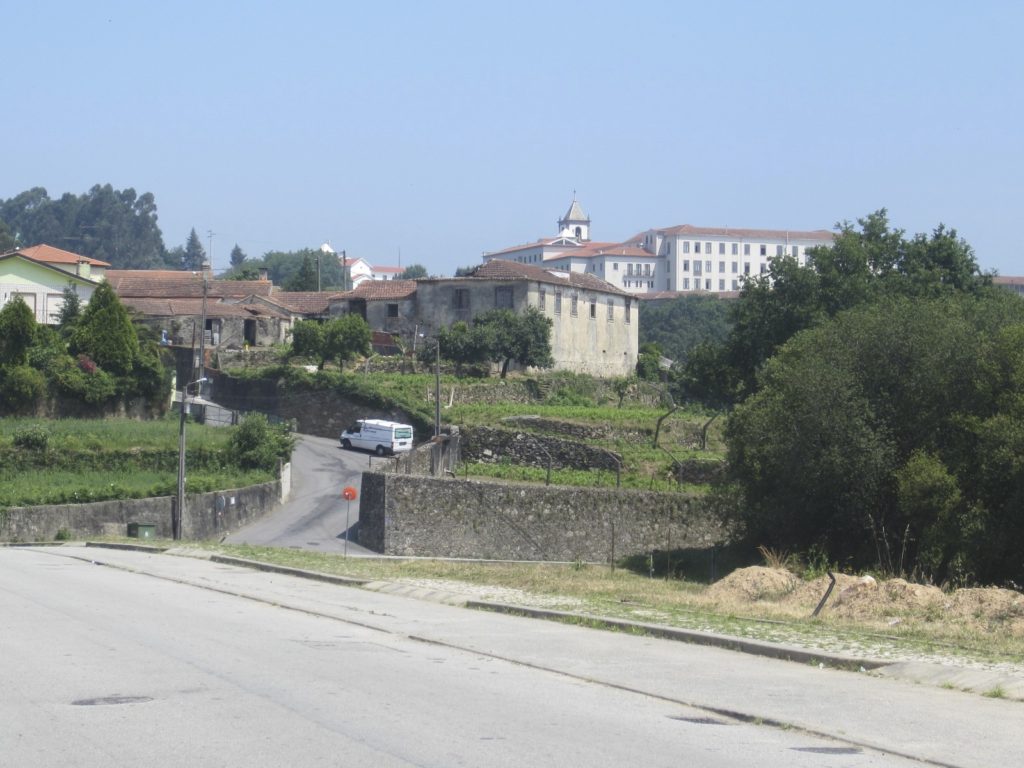
I was in the greater Porto area from that point onwards, despite having two days to go to reach that city. A few stretches of country road offered bucolic charms and hints of historical whimsy, but the cobblestone paths were proving arduous on my feet and limbs. My walking poles had been extensions of my body on previous caminos, offering me both a method of propulsion, and a way of alleviating pressure on the joints and feet. The absence of the rubber ferules, such a small item in the grander scheme of things, made walking on concrete more demanding, challenging and tiring. Cobblestones provided an abundance of awkward angles, crevices, bumps and hollows that struck just the wrong chord with my tired and aching feet. After several hours walking in demanding heat, I reached Sao Joao da Madeira, a town that seemingly has Roman roots, but if it does they are buried deep beneath the bland concrete suburbs, industrial landscapes and extravagant shopping malls overhead. I decided I would stay with the bombeiros again, as the only other lodgings in town was a pricey hotel, or at least pricey by camino standards. Or my camino standards.
I followed the signs in the town until I reached the fire station. Inside was a quaint little cafe/bar, where just one attendant was working behind the counter, and she took an eternity to prepare every drink. I was hoping that at some point she might notice the incongruous, tall, emaciated character standing forlornly in her bar, and might indicate where I should go to find my lodgings for the night, but that wasn’t to be. She took so much time to prepare each cup it seemed she was going all the way to South America to personally source the coffee beans before returning to Portugal and preparing the brew. Two months later, when I finally caught her attention, she indicated that I should go upstairs. There I was met by a lady who presented me with a sheet of paper in English informing me that a volunteer from the fire service would be along shortly to collect me and bring me to their fire station where I could stay the night.
Some time had elapsed, maybe forty minutes or more, when a volunteer called Patricia arrived in an ambulance and apologised for the delay, stating she’d had official business just before. She told me to hop into the back of the ambulance, and she drove me to the station a few kilometres away. She was very friendly and helpful, and ensured that I settled in when I got there. I thanked her profusely for her kindness, and reflected soberly on my circumstances. The men and women of this fire station all voluntarily devoted their time to helping other people in distress. I had felt put out by having to wait around for someone to collect me to bring me here for the night, but these people were putting their lives on the line to protect the lives of others. They put out fires in people’s houses and businesses, they drove sick people to hospitals and attended to the injured at scenes of accidents. Here I was, feeling at odds with the world because I was finding this camino to be a more physically and mentally demanding one than the previous two I’d completed, but I still had the health, strength and resources to indulge in the luxury of such a walk. And it was a luxury. I had a hell of a lot to be grateful for in my life, however else I might have felt from time to time. I needed to keep that in perspective when the going got tough.
THE PROMISED LAND
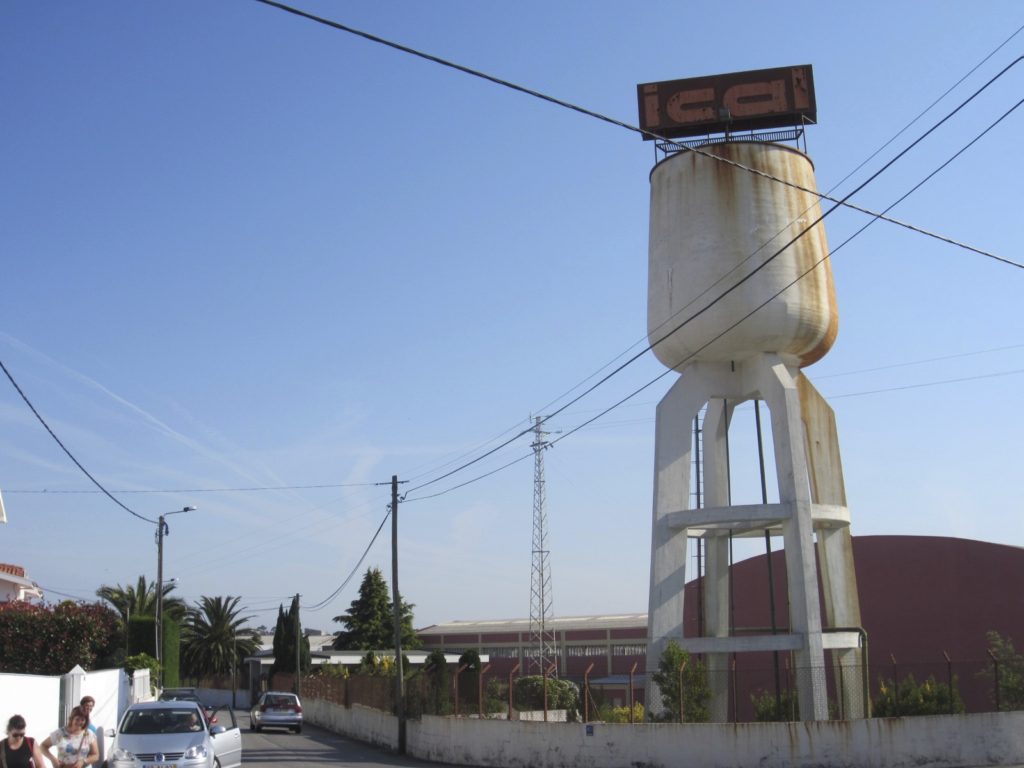
And the next day the going got tough. The road to Porto was about 35 kilometres in length, mostly along hard surfaces and through industrial estates and drab suburbs that gave no clues about the beautiful city that lay up ahead. It was a hot day, and it had been very warm since I started at 7 am that morning. Reaching Porto would be the first major milestone on this camino. It was like the crest of the mountain. It should (theoretically) be all downhill from here. In fact, I was well over the halfway point to Santiago. By the day’s end I would have completed over 370 of the 640 kilometres, having done about 30 km each day for 12 straight days. But the long, sweltering, thirsty walk to get to Porto, along unending and unforgiving hard surfaces, was the Camino’s equivalent of having your wisdom teeth removed. There had been some stretches of mesmerising ugliness along this path since Lisbon, but this stage was the equivalent of Lyndon Johnson. The route twisted and turned through an unending series of mind numbingly unmemorable suburbs for a period that made eternity feel like a short ad break. When I finally caught sight of Porto’s historic centre, it was like a small glimpse of heaven.
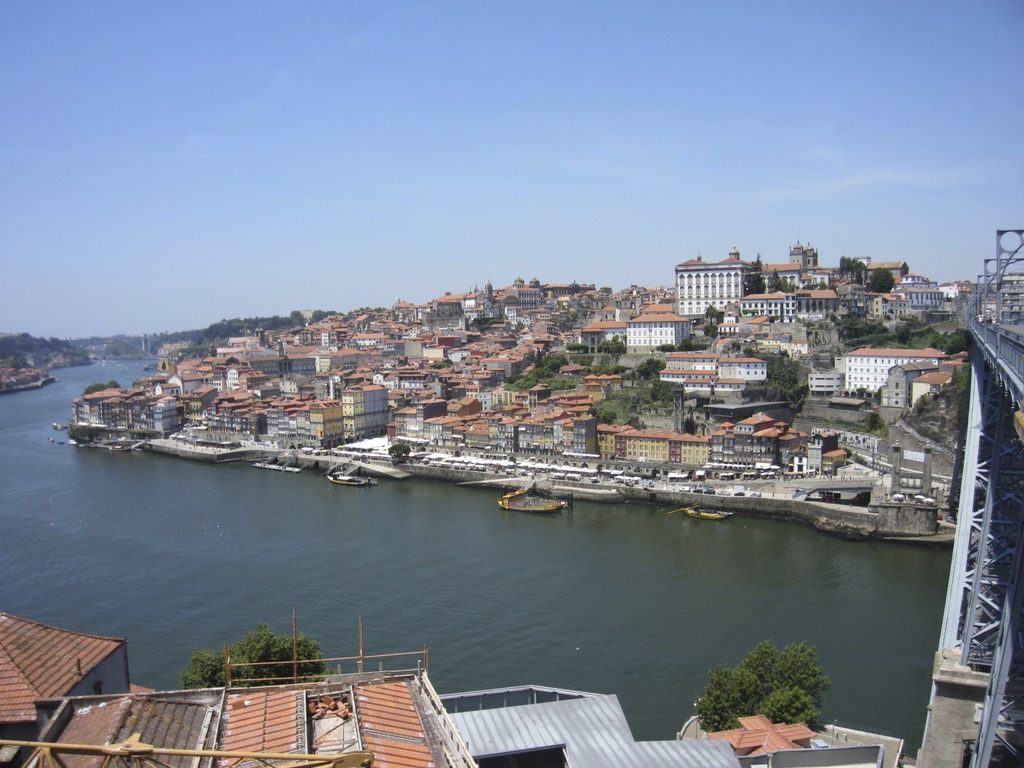
Porto is Portugal’s second city, from which the country took its name. Perched on steep banks of the Rio Duoro (River of Gold), many voyages set sail from here in the 15th century to discover (and conquer) the new world. The city retains a rich architectural heritage, a vibrant energy, a well respected football team, and for those who like their alcoholic beverages a wide variety of local port wines. I had never had to walk as many long stretches on the Francés as I had to reach this city, nor had I to deal with the lack of company, shortage of provisions, searing heat, fatigue or irritating injuries, but I had reached my first goal and done so without the usual imaginary litany of disasters befalling me. I think I was reaching a point mentally where I could venture into the unknown without any real fear of the consequences. After all, whatever might go wrong I was still in Europe, not in some far flung remote corner of Himalayas or the like. And even there, as I later discovered, the worst that can happen is not that bad either. Unless of course something worse happens.
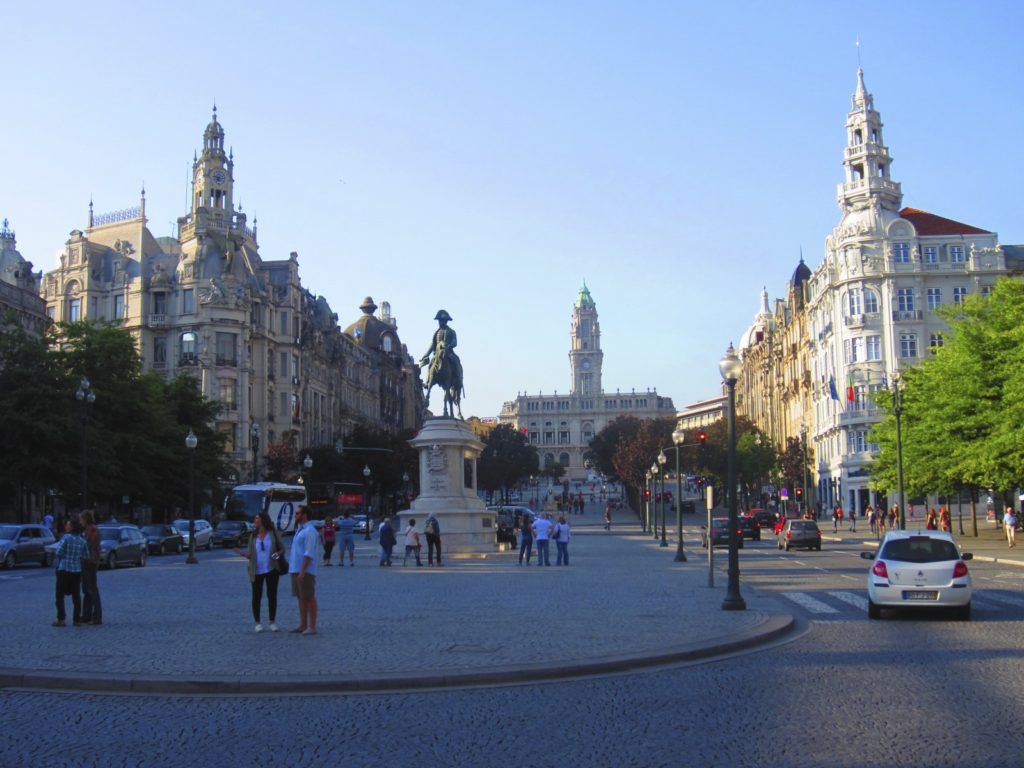
I took a night off in Porto to rest my weary bones, enjoy the sights and sounds of this lovely city, and stay up late enough to watch Barcelona win the Champions League final. The life of a pilgrim is very highly regimented and physically demanding, but sometimes a period of rest is a necessary little luxury to recuperate from the challenges of being on the road. Days of leisure allow for time to stop and stare, linger longer in cafes, and appreciate the cultural and historic heritage that is so abundant in cities on the Iberian peninsula. But there is something odd about taking time out from a camino as well. The road is there to be walked, and a pilgrim has to be moving forward to progress on their journey. To stand still is to atrophy, so while my body needed a day to relax my soul itched to get back on the road. I extended my vacation until the ungodly hour of 9 AM on the day I resumed my journey, but then it was time to dispense with such indulgences and forge ahead. Having recharged my batteries, I was now returning to my natural state of being and I was more than happy to be back on the road where I belonged.
THE WILD ATLANTIC WAY
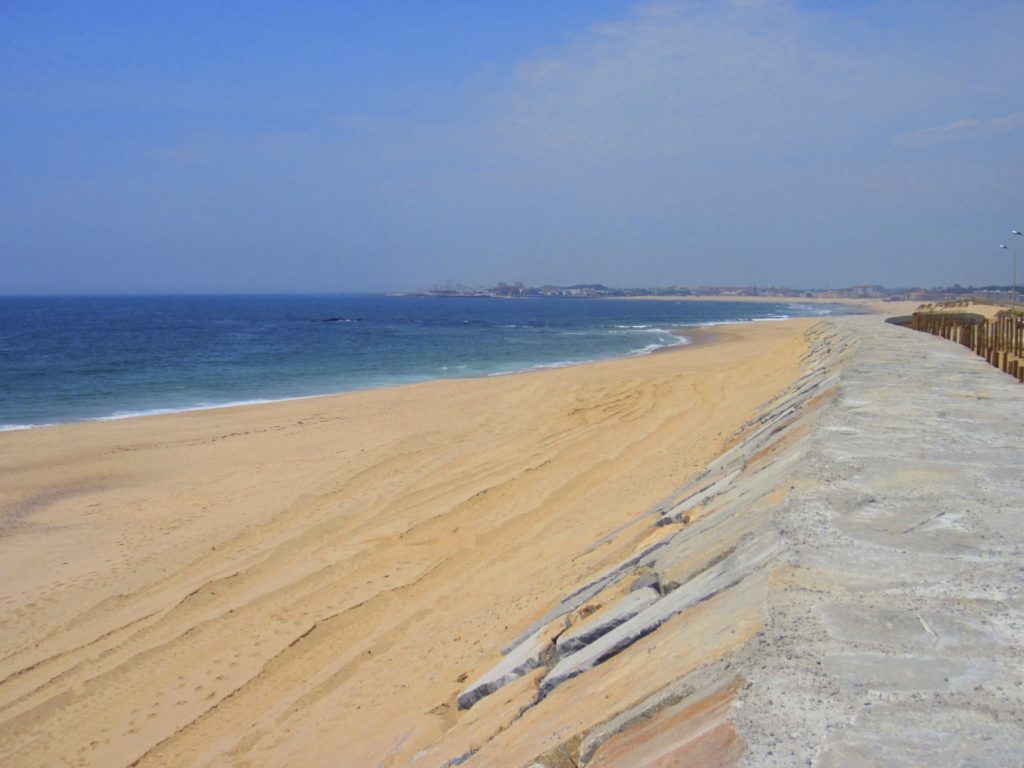
If the walk into Porto was like the approach to the land of Mordor in ‘Lord of the Rings’, exiting it by the water’s edge was like a stroll through the Garden of Eden by the sea. The waves of the deep blue ocean swashbuckled with the golden sands of the shore, and the warm and salty ocean breezes swirled through the air as I headed north to the town of Vila do Conde. Regrettably, this would be the only day by the sea on this camino, but one day of ocean magic is enough to compensate for multiple days of walking by power stations and through monster truck rallies. In the days ahead the stages would get shorter (though not just yet), accommodation would became more plentiful, and the surroundings would became more rustic and scenic. Many who walk the Caminho Portuguese begin in Porto, so all of a sudden I noticed a lot of fresh faced, eager pilgrims, who weren’t caked in grime or emaciated from walking twelve consecutive three quarter marathons in as many days. But as my fellow pilgrims were finding their camino legs and nursing the bruises and blisters that people endure in their early days, I was now able to enjoy the pleasures of this walk as I had already paid my dues.
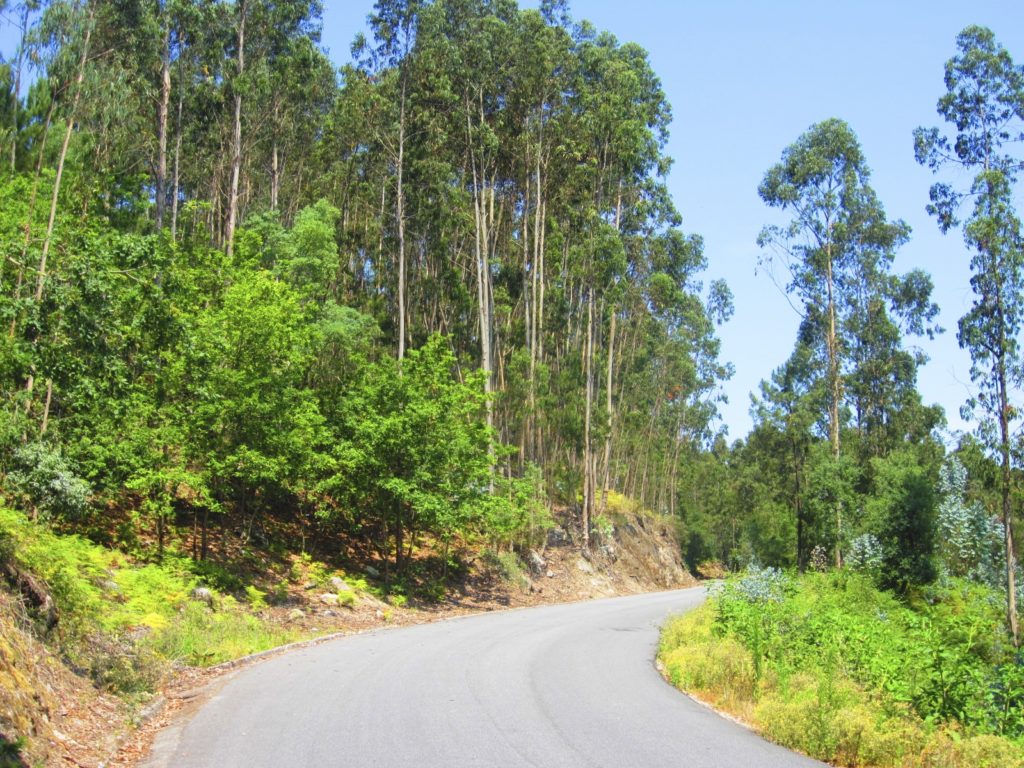
I stayed in the town of Vila do Conde on the first night after Porto. This was the first in a series of welcoming small towns that offered comfortable lodgings, good restaurants, and plenty of places to stock up on supplies. En route to Barcelos the next day I met an American couple called Shawn and Erica from Colorado, a Portuguese man named Luis, and a French woman called Clara, who spoke English with such a perfect American accent she could easily have passed as being from Stateside. These people became the core of my camino family for the remainder of the journey, and each evening we shared our meals in local restaurants and cafes, where, like true pilgrims, we laughed and joked about life, death, the Universe and all that. While the journey up to this point had been fairly isolated, now I was starting to feel the real spirit of the camino once again. The extended family of pilgrims grew to include two other American girls called Victoria and Hester, and for the first time on the camino I shared the path with two fellow Irish people. One, a man named Ger from Galway, was a veteran walker, while the second, a woman named Denise, was actually studying in a college about a five minute walk from my home. Insert appropriate small world cliche.
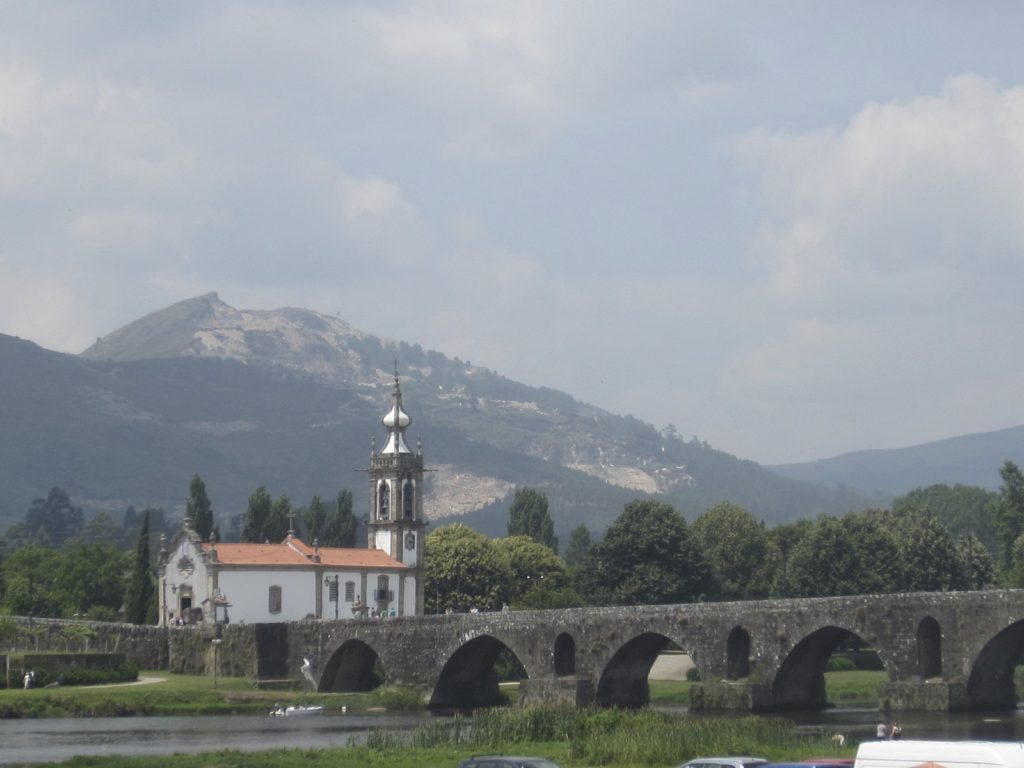
Northern Portugal was vastly more lush and green than the sunbaked stretches in the south. Tranquil hillside eucalyptus forests, sleepy villages, vineyards, and verdant woodlands were very amenable surroundings in which to undertake a journey of self reflection and discovery. On the third day from Porto I reached the fairytale town of Ponte de Lima, which boasts one of the finest medieval bridge in all of Portugal, and its curious mix of castles, statues, squares and promenades made it one of the more delightful places to linger for an afternoon. By this point were nearing the country’s northern frontier, and two days later we reached the border with Spain. A fortified city called Valenca stands on the Portuguese side. This bastion had been attacked by the Barbarians, Moors and even Napoleon’s troops in previous centuries, but now it is a peaceful and relaxed town where I wandered through its narrow streets for a while before crossing over into the neighbouring county.
I had spent 17 days walking in Portugal, and I had walked about 500 KM since I left Lisbon, even though the awful walk out of the capital and the equally awful walk into Porto felt like twice that length. The road had changed dramatically from the beginning, and I too felt quite different from the person who had set out on that path. It had begun as a camino of long days, soaring temperatures, meagre rations and limited shelters, where I was frequently tired, thirsty, hungry and frustrated. Since Porto, it had been a much easier and friendlier walk, but ease of passage wasn’t what the camino was about. The gruelling earlier part was the real test of character. The difficult days on the way are normally the more rewarding, even if they don’t feel like that at the time. They’re the ones where you find out what you’re made of and what you’re capable of doing. I can’t honestly say that I had really enjoyed the bulk of my time walking in Portugal, but I certainly am glad that I had the opportunity to explore territory outside my comfort zone, and test my physical and mental strength. I thanked Portugal for teaching me the lessons of endurance, resilience and determination, then quickly waved it farewell and hightailed it across the Rio Minho into Spain.
NORTH OF THE BORDER
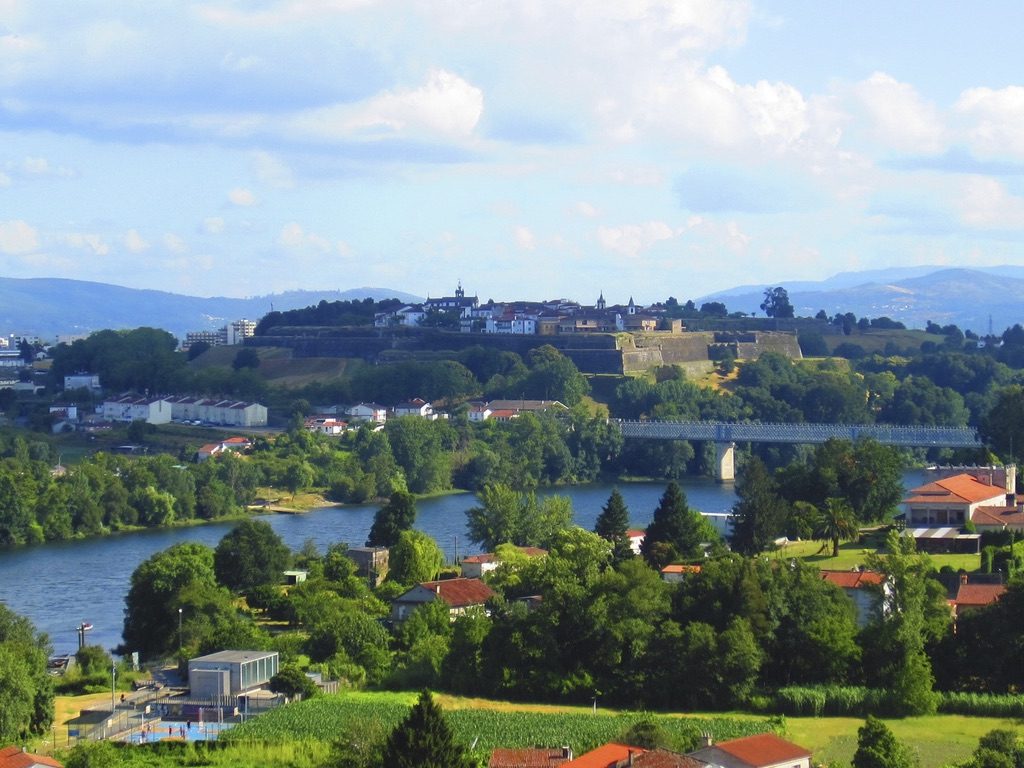
“Obrigado.” I said to the man who sold me the entrance ticket for the cathedral in the border town of Tui on a quiet Friday afternoon.
“No, no, signior. Gracies.” he replied. “España.”
Of course. I was back in Spain. More specifically in Galicia, that northwestern province which defies all Spanish stereotypes: desert landscapes are replaced by green fields, bagpipes take the place of guitars and flamenco, rain is more frequent than sun, and its Celtic heritage gives it more cultural affinity to my own native country than to much of the rest of mainland Spain. I had been to this region of Spain twice before, both times in October, when the weather ranged from miserable to awful to horrible to apocalyptic. Though I come from a country where it rains 400 days a year, nothing could have prepared me for the biblical soakings I’d suffered in Galicia. Contrary to what Eliza Dolittle claimed, the rain in Spain most definitely does not stay in the plain. This Camino, however, was proving to be the opposite of the other ones, and while I did experience a few brief Galician showers most of my walk in this region was bathed in gentle sunshine.
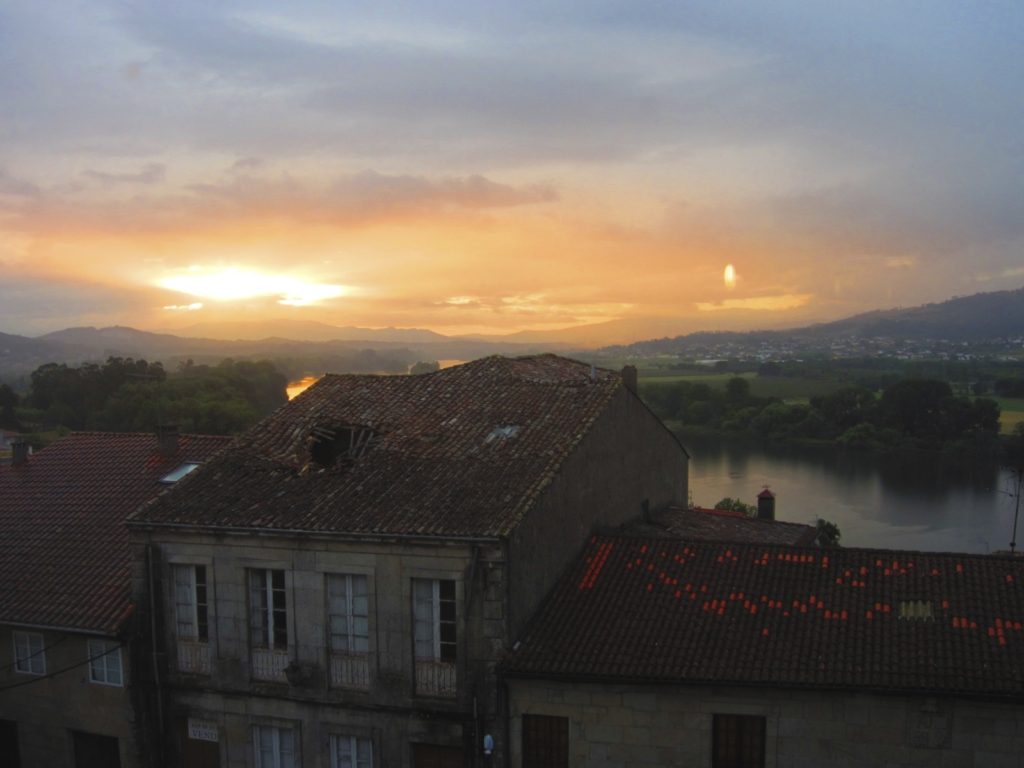
The colours of the Galician countryside were much more evident when seen through the prism of a summer’s day, and the towns and villages along this stretch of road were welcoming places to spend the night. Tui was the first port of call, where a magnificent cathedral dominated the town, which, much to my delight, had a cloisters that overlooked the nearby river. The next day the Camino passed through rustbelt town of Porrino, which provoked flashbacks of my earlier days on this walk, before finishing in the more agreeable town of Redondela. In the alberge that day I had lunch with a German man named Dietmar. Everyone you meet on this path has a story, but this man had a particularly good one. Over fifty years before, he had attended many of the concerts The Beatles performed in Hamburg just before they become famous. He probably told that story to everyone he’d ever met, but I enjoyed hearing it nonetheless.
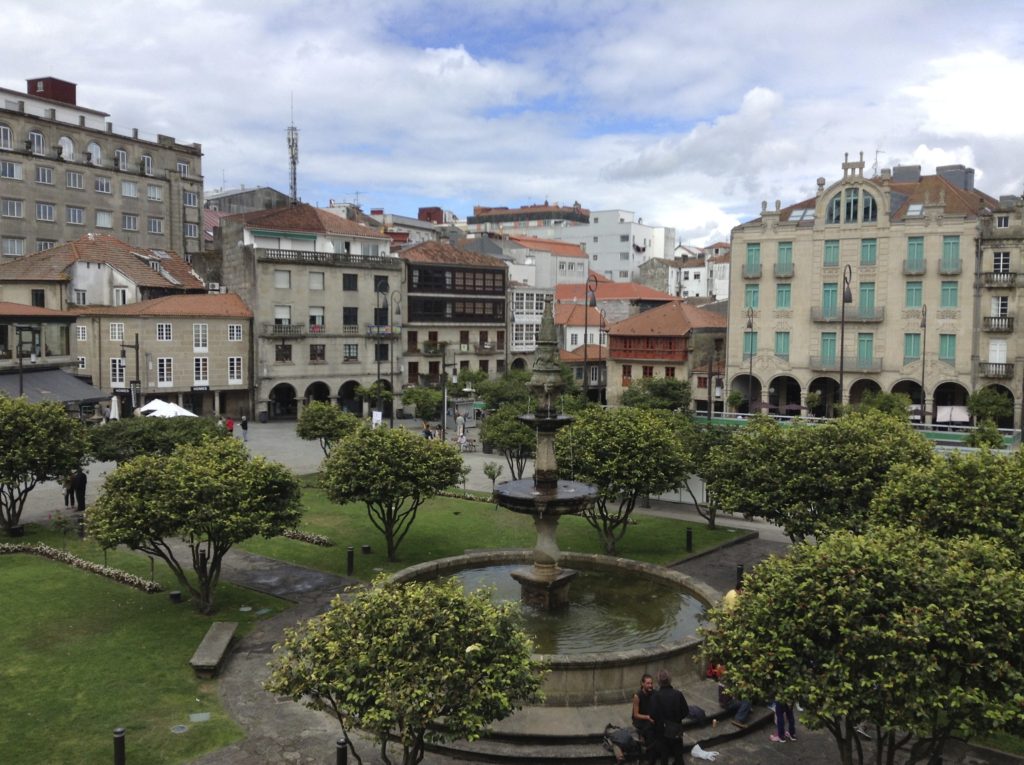
On the road to the delightful town of Pontevedra the next morning I spotted a man ahead of me who had a much quicker pace than the usual pilgrim. That was all the challenge I needed, so I upped my speed and within a short time I drew level with him. He expressed surprise to see someone match his swiftness.
“In all my time on the Camino I’ve never met anyone who walked faster than me,” he said somewhat despondently.
I felt his pain. There probably would come a time in the future when I too would encounter a pilgrim who walked faster than me. But not today. The former fastest walker on the Camino was named Steve. He was another veteran pilgrim, full of the American can-do spirit, who told me that he was a motivational speaker, philanthropist and an educational entrepreneur. I slowed down my pace to accompany Steve for a while, and listened politely as he regaled me with stories of how he had transformed the world with his charitable work and other ventures. The tales of his achievements seemed more than a little exaggerated, a sentiment that was echoed by my sceptical fellow countryman, Ger, a few days later, but I decided not to allow my Irish cynicism get in the way of his yarns. Being the motivational speaker he was, Steve was quick to offer words of support and encouragement to me and my fellow travellers about how we needed to believe in ourselves and keep on going when the times got tough. These words were much appreciated, if a bit patronising, however I couldn’t help but feeling I didn’t need any motivation from someone who couldn’t walk as fast as me.
IN THE SHADOW OF SAINT JAMES
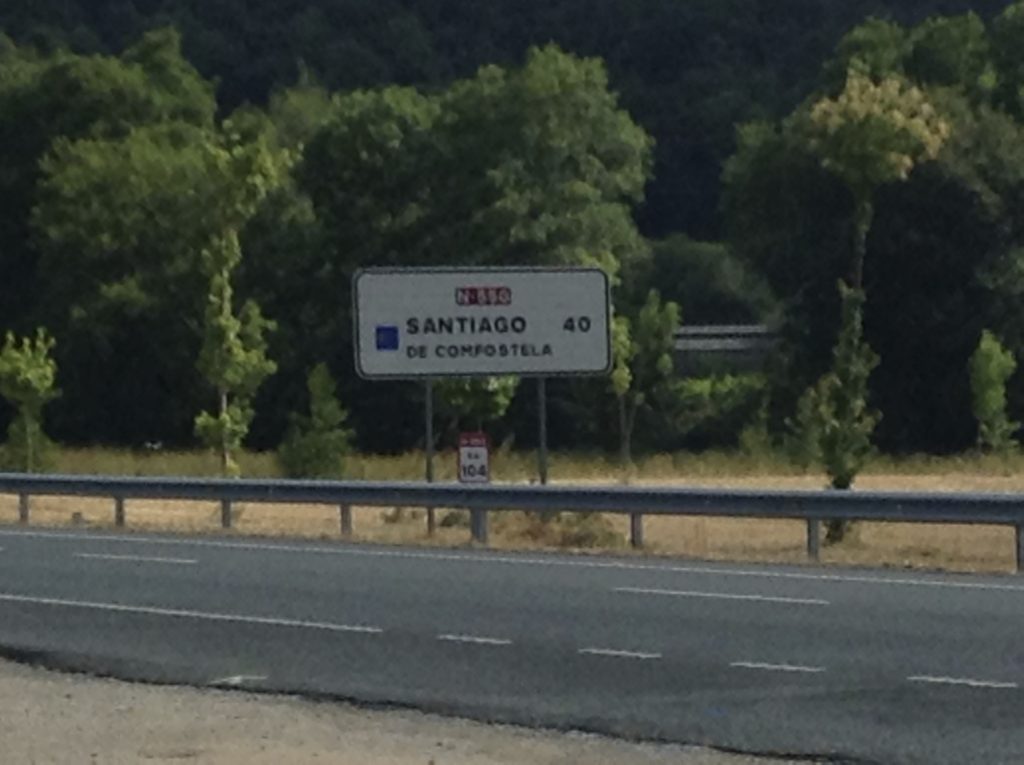
Santiago was now drawing closer with each passing day. Road signs indicated the distance in double figures, and we all expected to reach the city on the following Wednesday. Those final stages were days of summer bliss, as the trail twisted its way through the peaceful forests and meadows of southern Galicia. I continued to enjoy the good company of my American, French and Irish Camino family. Though we had known each other for no more than a week, it felt like our friendship was timeless. Weeks spent on a walking pilgrimage distorts one’s perception of time and distance. Porto, where they had all began their journey, and where the second half of my pilgrimage had begun, was probably no more than two hours away by car, but for all intents and purposes it may have been in a different country. (The fact that it was is beside the point.)
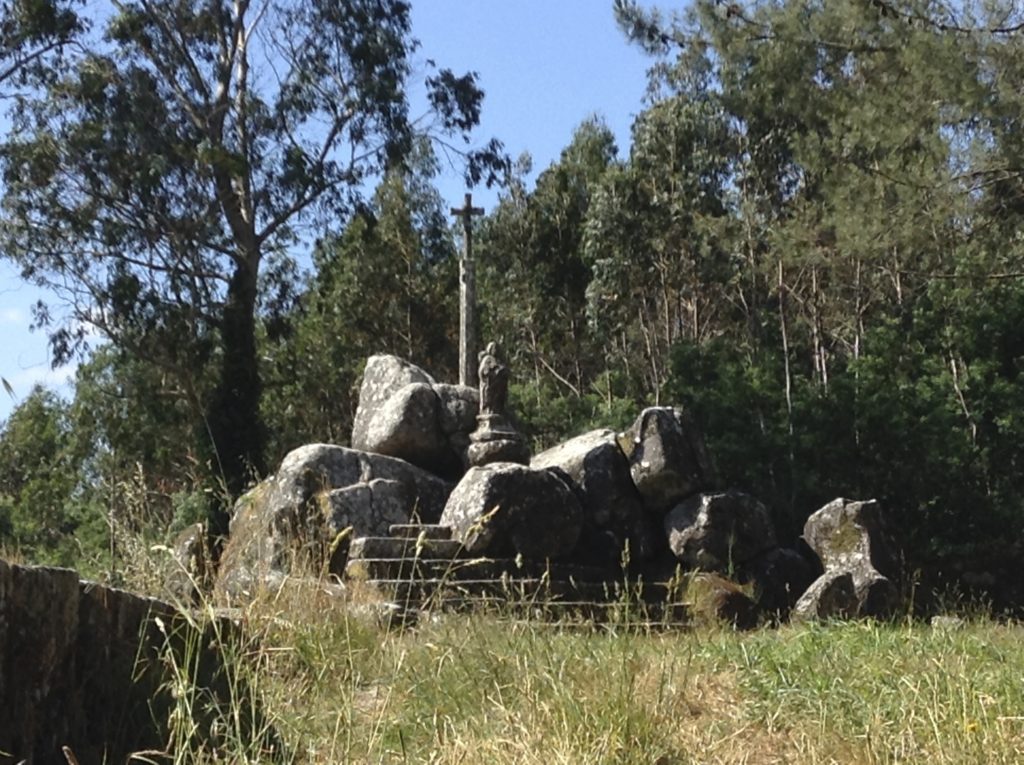
The town of Padron, about 25 KM from Santiago, is normally the place people spend their penultimate night on this camino. Our gang opted to go a little further so we would get into Santiago early enough the next day to attend the high mass featuring the monumental swinging of the giant Botafumeiro. I wanted to explore Padron a little beforehand, as legend claims it was on Monte Santiaguiño above this town that Saint James first preached the gospel in Spain. Reaching this site involved a healthy climb, but the quiet, forested meadow that met me at the top, with just a simple church and a crucifix to mark the spot, proved to be a serene transcendent place. Whatever the historical accuracy of the story of Saint James’ ministry in Spain, the myths carry great power and significance. Where I stood had drawn people for thousands of years. By coming here, I too was participating in a great historical drama. My own reasons for walking the camino, and the difficulties and joys I experienced along the way, were just part of the same story in which countless others had also participated down through the centuries.
I spent some time here in quiet contemplation. Though I had flippantly rejected a lot of conventional religious beliefs in my youth, walking the Camino had taught me that religious truths were not simply propositional statements to which we had to give our assent regardless of the evidence. Religious beliefs were ways of teaching us how to relate to the world, and they have been embodied in traditions that have evolved and been refined over time. These beliefs help us to make sense of where we are, explain why things are the way they are, give us guidance to improve ourselves, while other times they just help us to accept the world the way it is with all of its faults. Each individual will have to endure the same lifelong challenges their forebears did, and all religious traditions can contribute some wisdom to understanding the never-ending existential dance in which we are all engaged. On Monte Santiaguiño Saint James is said to have articulated his wisdom to the people of Iberia. Two thousand years later, those who follow in his footsteps continue lean on the teachings of him and others of his ilk (like a pair of supportive walking sticks with the rubber ferules attached) to help them navigate the confusing paths of life. Whatever you believe when you do the Camino, know that you are walking a path and following a tradition that has wisdom and tradition woven into every step. You just have to attune yourself to hear its message.
SANTIAGO IN THE SUNSHINE
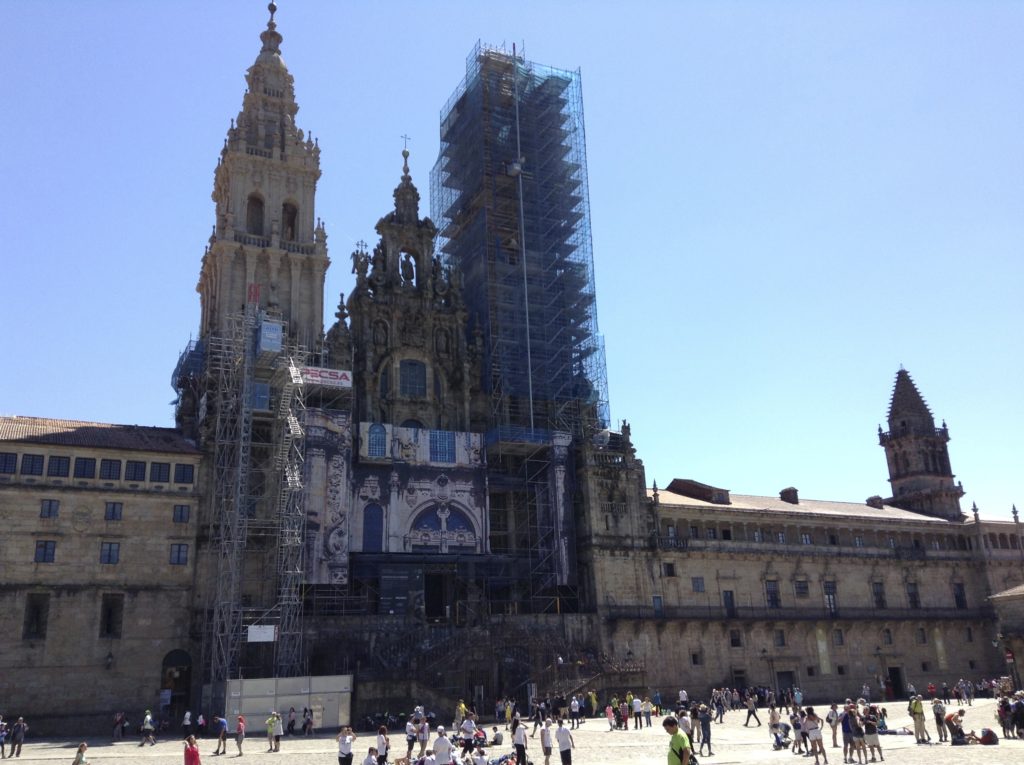
And so it was, the day arrived to reach Santiago. The cathedral looked majestic in the rays of the summer sun, a sight I had never seen in this part of the world before. So horrific was the rain in Santiago the first time I reached the city back in 2004 that I ran out of superlatives to describe it. Then came the second time, in 2013. The only word I could use to categorise the weather on that occasion was worse. Now, just twenty months laters, I had made it back here again. I walked into the epic Praza de Obradoiro with my colleagues, and we celebrated the completion of our journey with the cliched photo in front of the cathedral. The sunlight displayed the city’s beautiful old buildings in a new palate of rich colours and textures. It was fascinating to see it in such a light, yet it did feel like a very different place from the Santiago I had visited before. Although I had only walked 640 KM this time, unlike the 800 KM I had walked on previous occasions, I did feel like this was a tougher excursion. This journey had demanded a lot more from me physically than any previous camino, and I wasn’t sure what it had gotten from it in return. Perhaps I needed to look at it a different way.
It is said the camino doesn’t always give you what you want, but it does give you what you need. It seems that on this occasion I needed long days walking on hard surfaces, often in intense heat, with less food and water than I would have liked, and many solitary hours with just my thoughts and terrors to keep me company. Why was the Universe dishing me out such challenging measures? It may simply have wanted me to experience a journey that had more hardships than comforts, more downs than ups, and more bumps and hollows than one normally encounters. Everyone of us has to endure unpleasant jobs, noisy neighbours, toxic relationships, traffic and a thousand and one other issues from the tragic to the trivial, and we have to persevere when we do. Life is demanding at the best of times, and it’s unfair. We don’t always get treated the way we want to, or get the just desserts we think we’re entitled to. Sometimes the journey of life is rocky, but we’ve got to keep on walking in any case because that is what it’s really all about.
Thank you! A wonderful account of your journey.